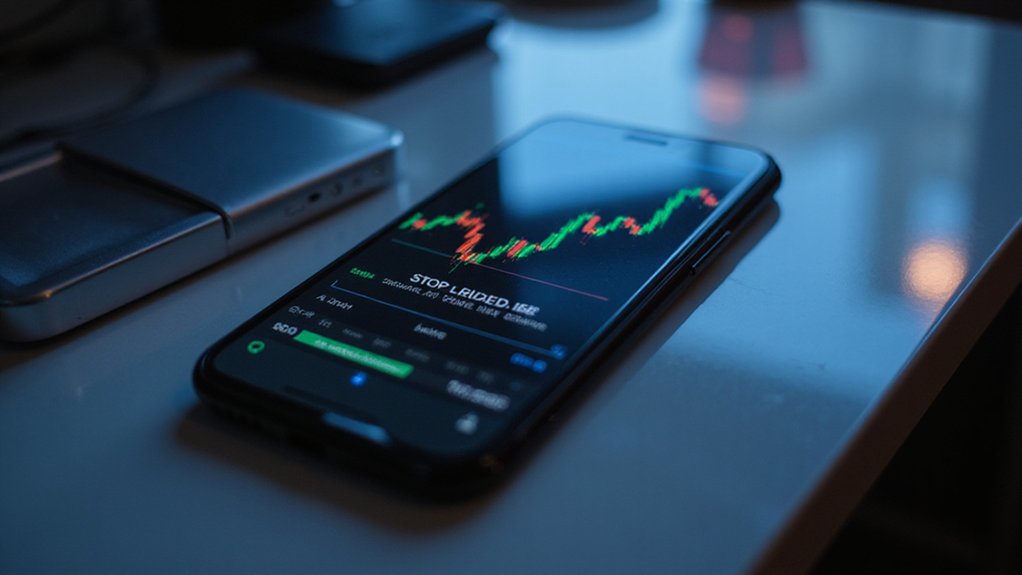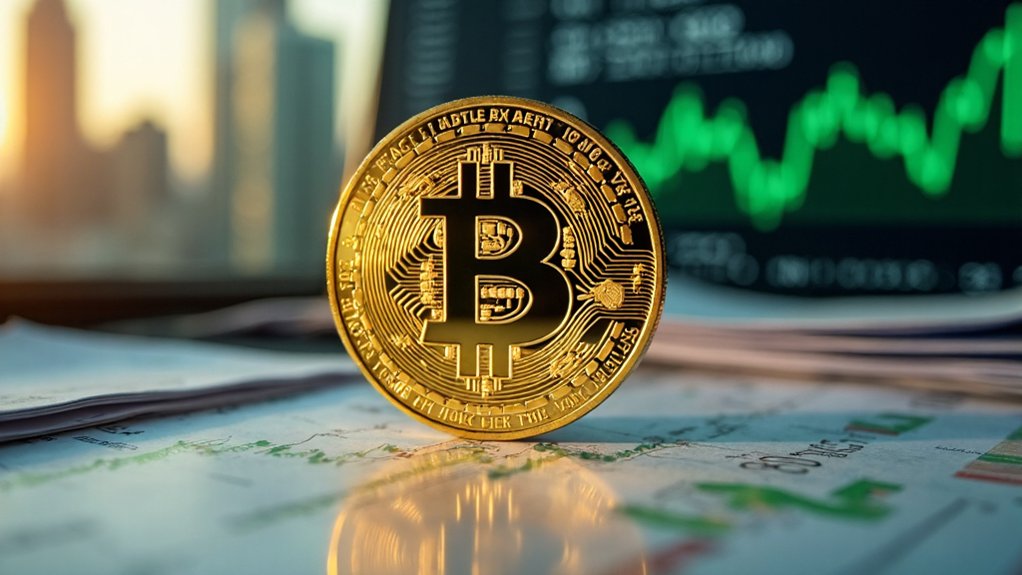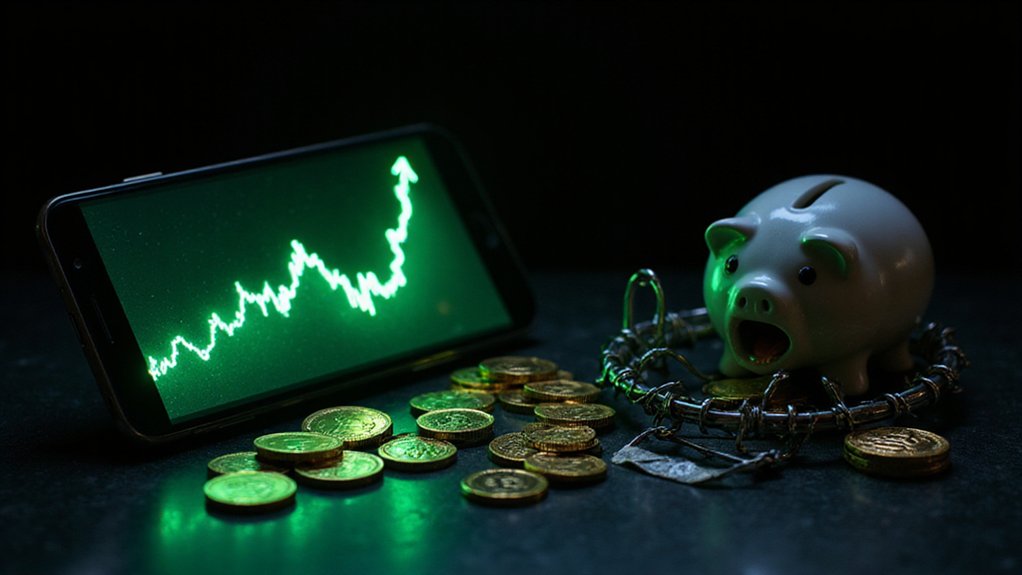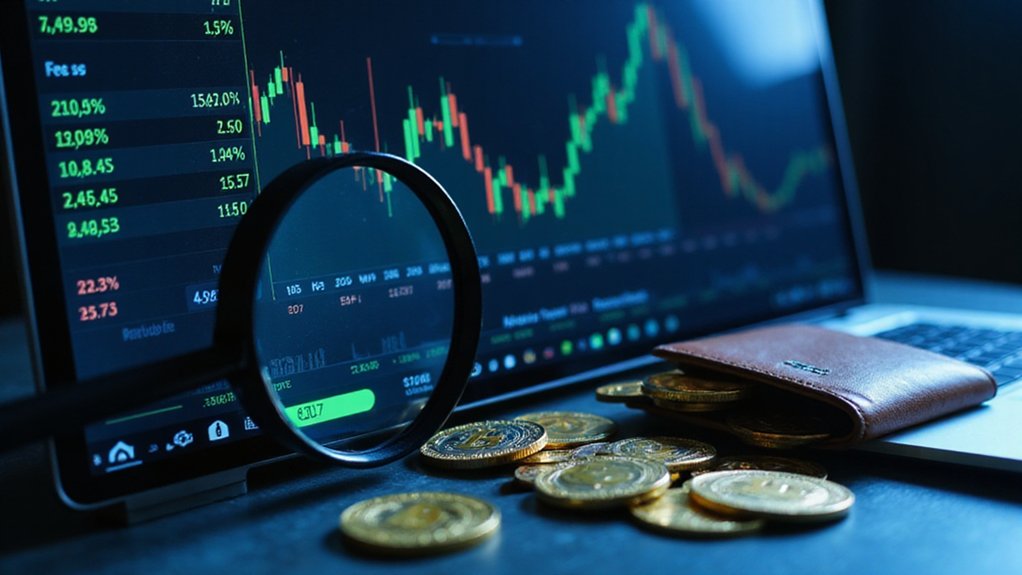A stop-limit order in cryptocurrency combines two critical components: a stop price that activates the order and a limit price that establishes execution boundaries. This automated tool—beloved by traders who can’t constantly monitor volatile markets—transforms into a limit order once the market breaches the stop price, offering protection against slippage while maintaining price control. Unlike market orders, stop-limits won’t execute at any available price, providing a safety net during dramatic swings (though with no execution guarantee). The delicate balance between control and certainty reveals itself in the practical mechanics of these orders.
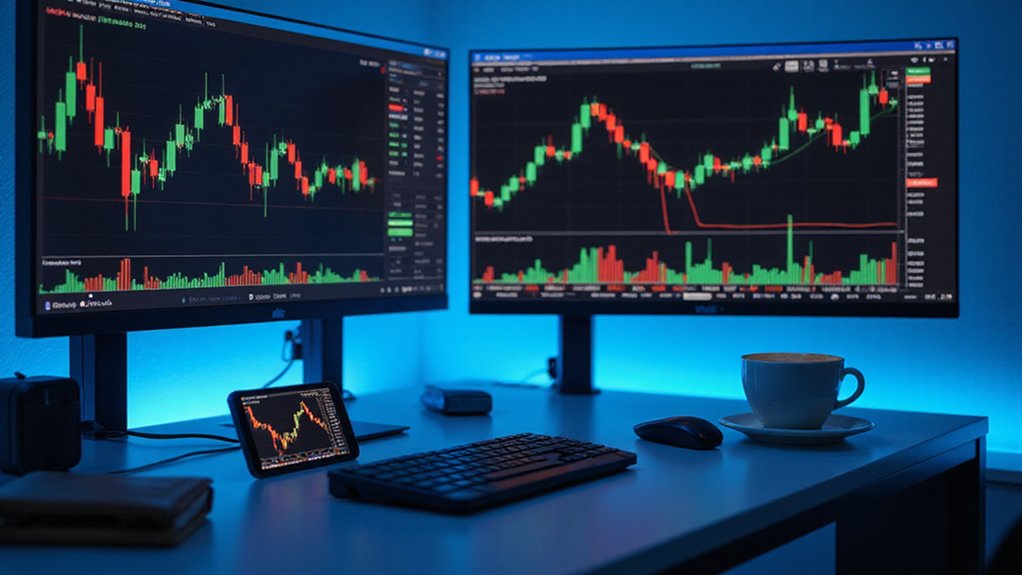
How frequently do cryptocurrency traders find themselves lamenting the vagaries of a volatile market that moved too quickly for their manual interventions?
The answer, invariably, is “far too often” – a predicament that has catalyzed widespread adoption of automated trading tools like the stop-limit order.
This sophisticated trading mechanism combines elements of two distinct order types, marrying the trigger functionality of stop orders with the price control of limit orders.
When a trader establishes a stop-limit, they define two essential parameters: a stop price that activates the order, and a limit price that sets the boundaries of acceptable execution.
The nuance here is significant; unlike a simple market order that executes at prevailing rates (whatever those might be – and in cryptocurrency markets, “whatever” can encompass a startlingly wide range), the stop-limit remains dormant until market conditions breach the predetermined stop threshold.
Upon activation, the order transforms into a limit order rather than executing immediately, providing a safeguard against slippage during particularly volatile episodes.
Consider the trader who, having purchased Bitcoin at $30,000, wishes to protect against substantial downside.
By setting a sell stop-limit with a stop price of $28,500 and a limit price of $28,200, they create an automated guardrail that triggers when prices deteriorate but refuses execution below their acceptable threshold.
This approach relies on careful consideration of technical indicators such as moving averages to determine optimal stop prices.
The stop-limit order leverages the order book functionality to ensure trades execute only when specific price conditions are met, preventing unfavorable trades during market instability.
The mechanism’s utility extends beyond defensive positioning.
Buy stop-limits enable traders to capitalize on confirmed upward momentum without constant vigilance, activating only when prices demonstrate conviction by breaking through resistance levels.
While limit orders provide price control, they offer no execution guarantee in cryptocurrency markets with low liquidity.
This precision, however, comes with an inherent trade-off: unlike market orders, execution is never guaranteed.
Should prices gap dramatically or move rapidly through the limit price without sufficient liquidity, the order may remain unfilled – leaving the trader exposed to precisely the scenario they sought to avoid.
The stop-limit therefore represents cryptocurrency trading’s delicate balance between control and certainty, offering protection that is powerful but imperfect in markets where imperfection remains the only constant.
Frequently Asked Questions
Does a Stop-Limit Order Guarantee Execution During Market Volatility?
No, stop-limit orders absolutely cannot guarantee execution during market volatility.
While they offer price control—a feature traders understandably covet—they’re fundamentally vulnerable to rapid price movements.
When markets experience sharp swings (particularly common in the ever-capricious cryptocurrency world), prices may blow past the specified limit price without pausing for execution.
This creates the trader’s dilemma: the very mechanism designed to protect against unfavorable prices often renders the order unfillable precisely when action is most needed.
How Do Fees Compare Between Market Orders and Stop-Limit Orders?
Market orders typically incur lower fees than stop-limit orders due to their simplicity and immediate execution.
Stop-limit orders command a “complexity premium” with higher costs reflecting their conditional nature and the additional processing required.
Brokerage platforms generally charge more for the precision control offered by stop-limits, though fees vary widely across providers.
During high volatility, these elevated costs might be justified by the protection they afford—a financial insurance policy that, like most safeguards, comes at a premium.
Can Stop-Limit Orders Be Placed Outside Regular Trading Hours?
Yes, stop-limit orders can typically be placed outside regular trading hours on most cryptocurrency exchanges, which—unlike traditional markets with their quaint notions of closing bells—operate 24/7.
Traditional markets, however, generally queue such orders until trading resumes.
Traders should note that while placement is possible off-hours, execution follows platform-specific rules; some brokers hold orders until markets reopen, potentially exposing positions to overnight gaps and volatility that would make even seasoned traders wince.
Which Cryptocurrencies Typically Support Stop-Limit Functionality?
Most major cryptocurrencies support stop-limit functionality across established exchanges.
Bitcoin and Ethereum—the market’s heavyweights—universally offer this feature, while popular altcoins like Cardano, Solana, and Ripple typically provide stop-limit capabilities on mainstream platforms.
Exchange-native tokens (BNB on Binance, for instance) predictably support this functionality, as do major stablecoins including USDT and USDC.
The availability generally correlates with trading volume and liquidity—the more substantial the asset, the more sophisticated the order options.
What Happens if My Stop-Limit Order Only Partially Fills?
When a stop-limit order partially fills, the remaining unfilled portion stays active in the market until completely executed, canceled, or expired.
This partial execution—often resulting from insufficient liquidity, market volatility, or aggressive limit pricing—can disrupt risk management strategies and leave traders with unintended position sizes.
Savvy traders respond by monitoring the remainder closely, possibly adjusting limit prices, or manually closing the order to prevent unexpected executions during unfavorable price movements.
